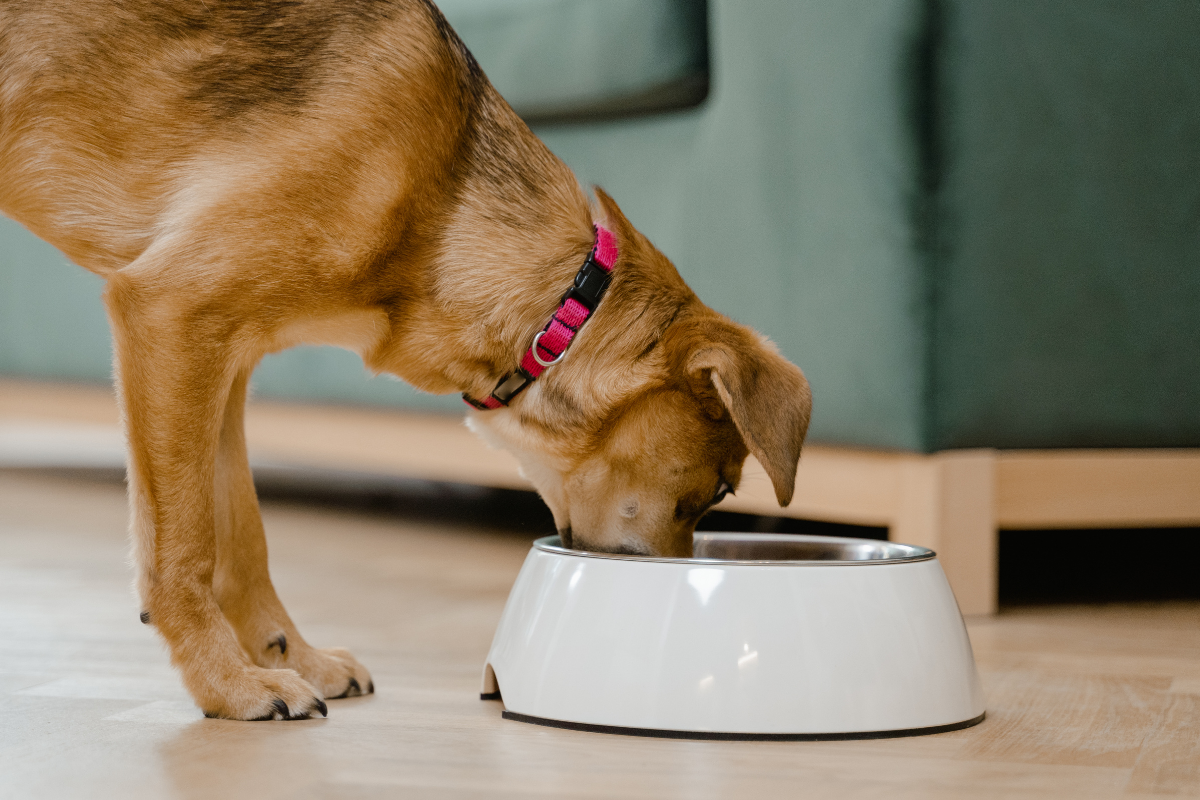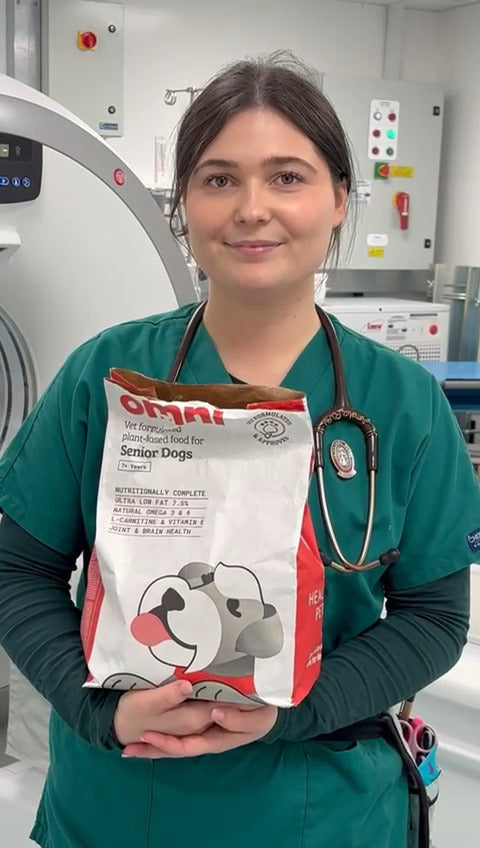Switching Your Dog To Omni Dry Food

Have you been curious about switching to Omni’s delicious, nutritionally complete and cruelty free food but not sure where to start? Let us guide you through how to make a safe and easy transition, and join the thousands of happy and healthy dogs loving their mealtimes again!
Thousands of dogs across the UK have made the switch to our nutritionally complete, plant-based dog food, and here are some reasons why:
- To avoid meat related food allergies and sensitivities that cause itchy, inflamed skin, waxy ears and/or loose stools and tummy upsets.
- To ensure their dogs are getting a good quality, nutritionally complete diet, that meets their dog’s needs at every stage of their life.
- To cut down on the enormous environmental impact and carbon foot (1) print that comes with feeding dogs a meat-only diet.
- The ethical choice; no animals slaughtered to make any Omni products so they truly are cruelty free.
- To have a dedicated and efficient vet team and customer excellence team on hand to help you with any food, health or logistical related queries you might have.
- Most importantly, because their dogs love it!
How do I make the transition?
Gradually!
We recommend that you introduce Omni slowly over the course of one to two weeks, to allow your dog’s stomach to adjust to the change, as well as their palate! Dogs can be a creature of habit, so give them time.
Start by mixing in a small amount of Omni into their meal for the first 2 days. All being well, substitute 25% of their old food for Omni, after 4 days increase to 50%, after 4 more days 75% until around day 12 when you can make a complete switch.

Most people start to see benefits of the diet change in their dog after 3-12 months, perseverance and patience are key - it will be worth the wait!
Will my dog show any negative signs after switching?
Even with a gradual transition to any new diet (be it raw, fresh, insect, plant based etc), it is perfectly normal to observe some changes in your dogs stool habits in the first months of introducing the new diet, and most commonly in the first 48 hours.
The new food will alter your dogs gut microbiome (the normal intestinal flora of good bacteria) and this result in loose stools whilst the body settles and adjusts.
If you are concerned at all, reach out to our dedicated vet team, who are at hand to give you personalised advice.
It is worth noting that ideally all dogs should be in good health before introducing new foods. Any pre-existing illnesses (e.g. inappetence and vomiting from scavenging in the park the day before) will make assessing their response to a change in diet difficult.
What are the benefits of switching to Omni?
Shiny coats. Better stools. More energy. Delicious biscuits. Maybe even longer life, one study found that plant based dogs live up 18 months longer than their meat eating counterparts. All round happier dogs.
Have a look at our TrustPilot reviews, we have so many happy dogs and guardians who’ve already made the switch.
People often underestimate the benefits of a good diet made from quality ingredients. In fact in people, it’s known that your gut microbiome can impact mood and emotion(2) , as well as overall health (3)!
Last but not least, cutting down on your dog’s meat consumption will help reduce their carbon footprint and saving countless other animal’s lives. Guilt free, glorious food.
How much should I feed?
Have a look at the back of your specific bag of food- we generally recommend splitting feedings to 2-3 times daily to give your dog something to look forward to throughout the day, though it is possible to feed once daily or more frequently if your prefer.
Our feeding guide below provides a rough guideline of how many grams your dog should be consuming in a 24-hour period, based on their ideal bodyweight.
Of course, each dog is different and if you’d like tailored advice, our Vet team are on hand to guide you each step of the way.
Remember, Omni not only have nutritionally complete, stand alone diets, but also offer delicious daily supplements, treats, wet food and toppers too. Have a browse at our extensive range online.
1. Okin, G.S. (no date) Environmental impacts of food consumption by dogs and cats, PLOS ONE. Available at: https://journals.plos.org/plosone/article?id=10.1371%2Fjournal.pone.0181301
2. Valdes, A.M. et al. (2018) ‘Role of the gut microbiota in nutrition and health’, BMJ [Preprint]. doi:10.1136/bmj.k2179.
3. Martin, S.E. et al. (2023) The role of Diet on the gut microbiome, mood and happiness [Preprint]. doi:10.1101/2023.03.18.23287442.







 85 Great Portland Street, 1st Floor, London, W1W 7LT United Kingdom
85 Great Portland Street, 1st Floor, London, W1W 7LT United Kingdom